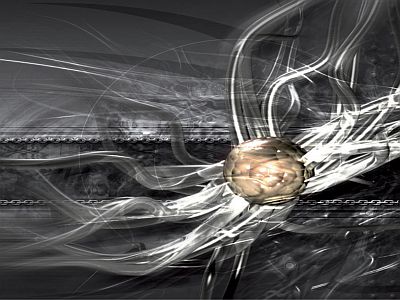An epoch-making prosthetic hand is developed that connects to the human nerves and skeleton and can be operated as desired and reduce phantom limb pain.

A highly integrated bionic hand with neural control and feedback for use in daily life | Science Robotics
https://www.science.org/doi/10.1126/scirobotics.adf7360
Bionic hand merges with user's nervous and skeletal systems, remaining functional after years - YouTube
Groundbreaking achievement as bionic hand mer | EurekAlert!
https://www.eurekalert.org/news-releases/1003939
Mr. Karin, who is from Sweden, lost his right hand from the elbow to the elbow in an accident with agricultural equipment more than 20 years ago. Although Mr. Karin was wearing a conventional prosthetic hand made from silicone materials, he not only felt discomfort while wearing the conventional prosthetic hand, but also experienced ` `phantom limb pain'' where he felt pain in the arm he thought he had lost. had been bothering me for many years. Karin said: ``I always felt like I had my hand in a meat chopper. This pain caused me stress and I had to take large amounts of various painkillers to calm down.'' states.
Therefore, a research team led by Rickard Brånemark of the University of Gothenburg began research to develop a new prosthetic hand. The research team performed `` osseointegration ,'' which integrates metal and bone, and attached a metal implant to the tip of Karin's arm to secure the device, as well as attach the remaining nerves and muscles in Karin's arm. We performed a surgery called `` Targeted Muscle Reinnervation (TMR),'' which repositions the muscle and links nerves to the muscle.

A prosthetic hand called ``Mia Hand'' developed by Italian robotics company ``

According to the research team, when a patient thinks about moving their fingertips, the nerves in the arm are activated, and the sensor embedded in the prosthetic hand picks up the electrical signals from the nerves and moves the prosthetic hand. 'By combining osseointegration with reconstructive surgery, electrode implantation, and AI, we can restore human function in an unprecedented way,' Brånemark said.
On the other hand, appropriate training is required to move the prosthetic arm as desired. Mr. Karin connected a device attached to his arm to a computer and trained to match his own trials and hand movements in virtual space.

As a result of repeated training, Karin has even become able to judge the hardness of objects she picks up.

Mia hand, like conventional prosthetic hands, can be easily attached and removed at the user's will.

Karin, who underwent implant surgery in December 2018, has been using Mia hand since mid-2019. Karin praised Mia hand, saying, ``The new prosthetic hand has alleviated my phantom limb pain and made it easier for me to return to daily life.This prosthetic hand has changed my life.'' He continued, ``Since I got my prosthetic arm in 2019, the amount of painkillers I take has decreased significantly.Participating in Dr. Brånemark's study has changed my living environment significantly, so I decided to take part in this study. It had an important meaning,'' he says.
Ortiz-Catalan, from the research team, said: ``Karin was the best patient to use our new prosthetic hand reliably. 'The fact that it can be used in this field is proof that new technology can be life-changing for amputee patients.'
Related Posts:







